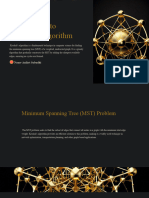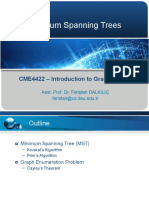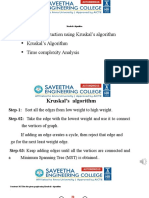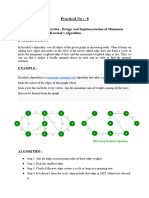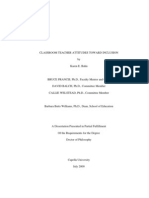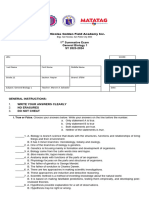0% found this document useful (0 votes)
30 views18 pagesKruskal's Algorithm for MST
The document discusses Kruskal's algorithm for finding the minimum spanning tree of a connected, undirected graph. It explains how the algorithm works by iteratively selecting the smallest edge while avoiding cycles. The time complexity of Kruskal's algorithm is also analyzed.
Uploaded by
saurabhthegeCopyright
© © All Rights Reserved
We take content rights seriously. If you suspect this is your content, claim it here.
Available Formats
Download as DOCX, PDF, TXT or read online on Scribd
0% found this document useful (0 votes)
30 views18 pagesKruskal's Algorithm for MST
The document discusses Kruskal's algorithm for finding the minimum spanning tree of a connected, undirected graph. It explains how the algorithm works by iteratively selecting the smallest edge while avoiding cycles. The time complexity of Kruskal's algorithm is also analyzed.
Uploaded by
saurabhthegeCopyright
© © All Rights Reserved
We take content rights seriously. If you suspect this is your content, claim it here.
Available Formats
Download as DOCX, PDF, TXT or read online on Scribd
/ 18















